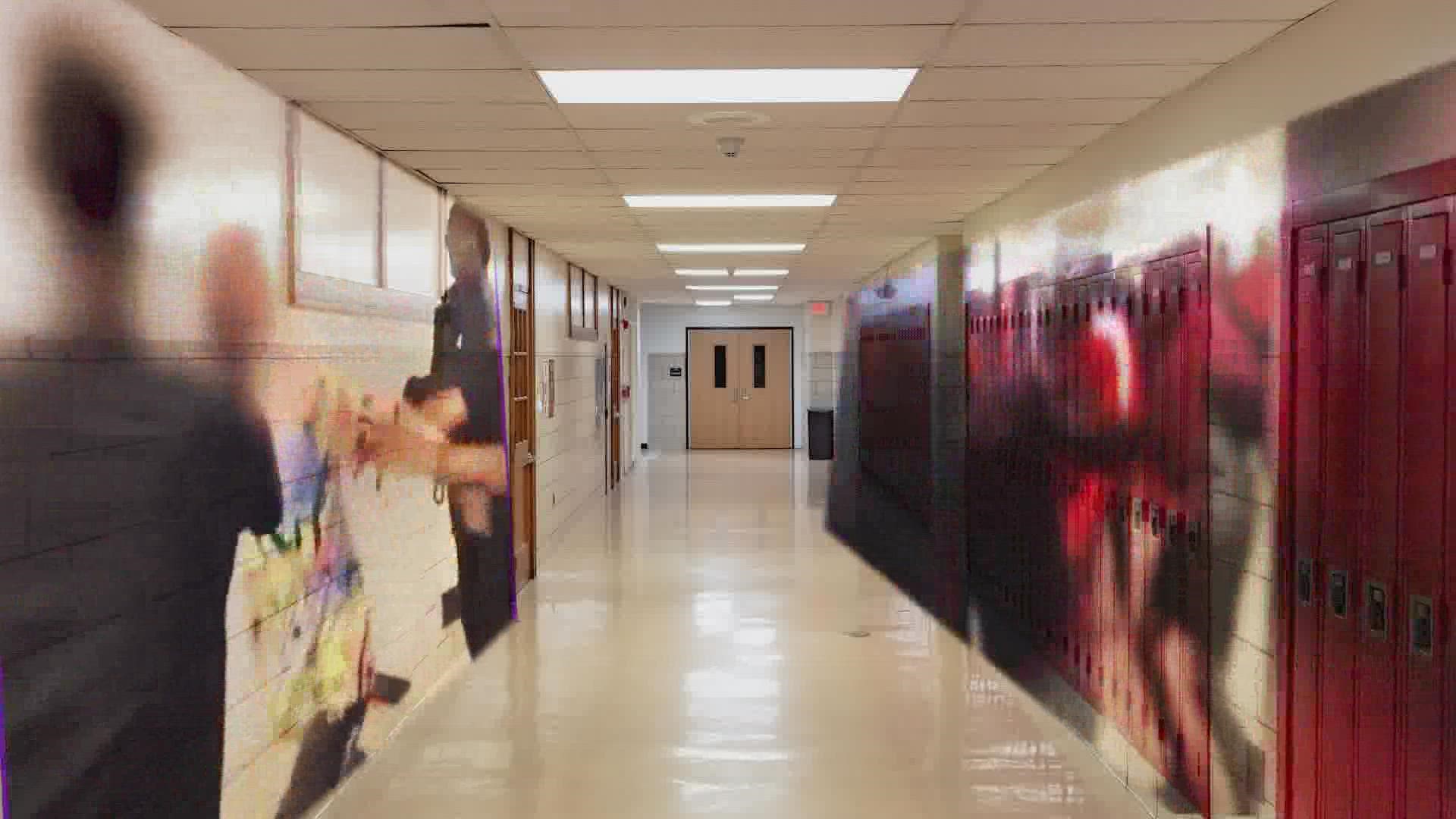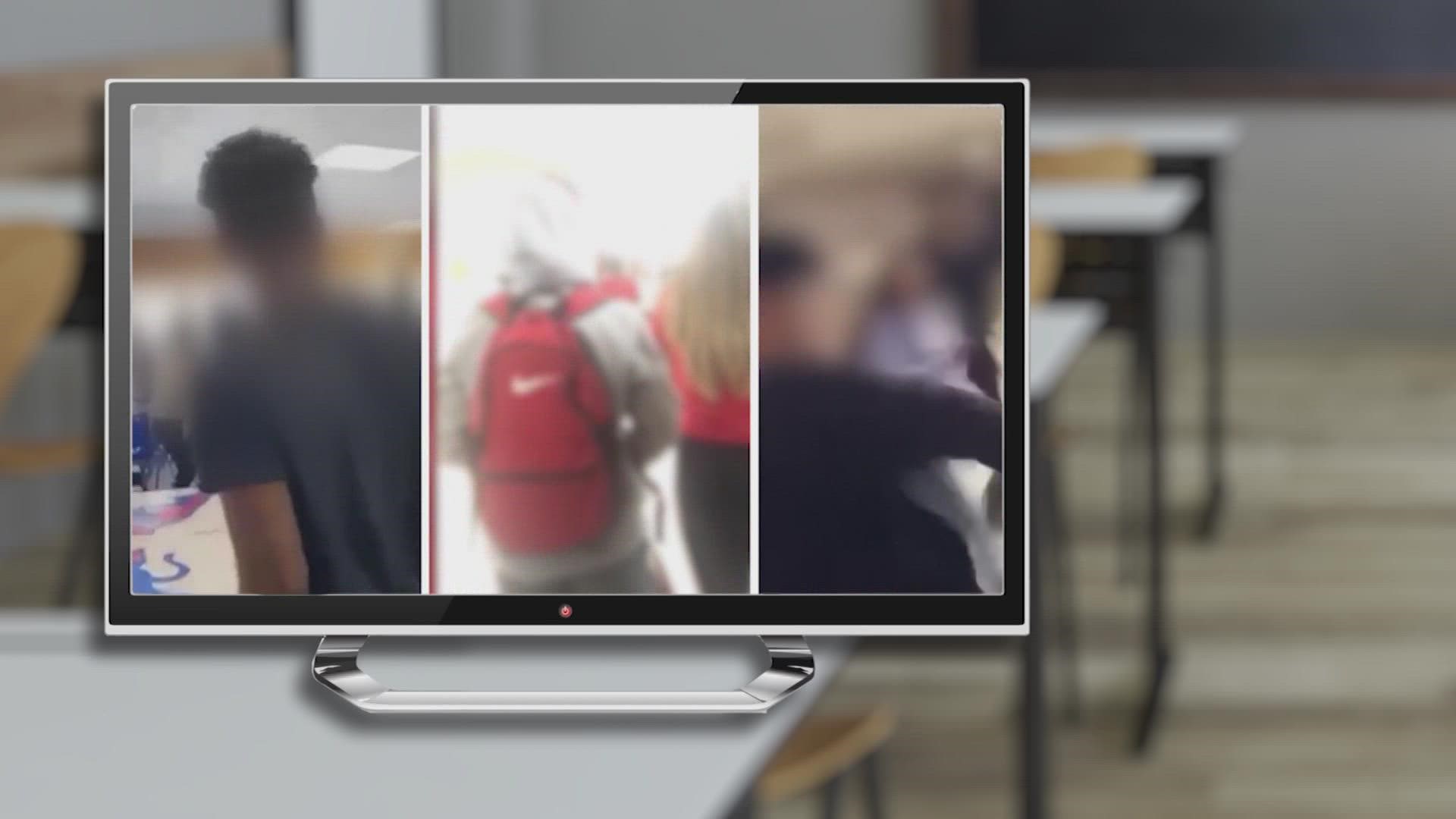KHOU 11 Investigates takes a close look at fighting numbers at Greater Houston schools
KHOU 11 Investigative Reporter Cheryl Mercedes takes a look at what's being done to combat fighting at Greater Houston schools.

Parents with kids who attend Houston-area schools have continually expressed that safety is at the top of their minds.
KHOU 11 News asked them to fill out a survey about fights and acts of violence at their child’s school. Many of them said it's a problem that's getting worse.
The majority of the 428 parents who took the KHOU 11 School Safety Survey said they've seen videos of kids kicking, punching and hitting fellow classmates between classes.
KHOU 11 investigative reporter Cheryl Mercedes did a three-part series on the concerns.
Chapter 1 Where are the most fights happening?
Sam Mayorga, Elizabeth Alanis and Steven Bergman took our survey and agreed to sit down with KHOU 11 to share their thoughts about school safety.
“There are some serious issues there,” Bergman said.
Nearly half of the people who took the KHOU 11 School Safety Survey said there are fights or acts of violence at their child’s school. Of those who said fights happen, more than a third said it happens daily or weekly.
“School safety is a big concern -- that my son can go to school every day, feel safe, be able to express his ideas and beliefs without fear of repercussion, that he can go and learn -- which is the whole purpose of public education,” Bergman said.
Some of the parents who took our survey said their kids told them about some scary situations.
- “I have heard about guns, knives ... kids getting stabbed with pencils.”
- “Kids bleeding after getting kicked or punched.”
- “He tells me he is scared and does not feel safe.”
Which Houston-area schools have the most fights? This map shows where your kids’ school stands.
Mayorga, who helped raise her younger sister, said fights happen outside after school behind buildings.
“They specifically choose certain spots to meet up because they know it’s going to take a long time for security, or administration, to come meet them. Kids are smart,” Mayorga said.
The parents said the fights are advertised on social media.
“Usually on Snapchat, because it just shows up for a little while, and then it disappears,” Mayorga said.
Elizabeth Alanis said she hears about them from her school-aged daughters and at work. She is a teacher.
“There was one time I remember students showed me something and I said, 'We’re going to go down to the AP’s (assistant principal) office right now,'" Alanis said. "It was a really isolated violent attack of a student in a hallway,”
Alanis said the school where she teaches has been put on lockdown because of a school fight.
“We’ve had situations where there have been fights on campus. We went into lockdown, and there were kids at my door talking to me," Alanis said. "So, I just pulled them into my room, and we shut the door and just waited, and I want to say it was until the end of the school day. It’s frightening as a teacher and as an adult. I’m glad I was able to at least allay the fears of the students that were in the room with me. But it does make me aware that it could happen at either campus of my own kids, and what do you do.”
“A lot of times these kids are acting out at school because there’s obviously something going on at home. They don’t know how to control that anger, Mayorga said. "So, then they get to school, and they have a situation where they are being picked on, and it just elevates the situation. It only takes one spark from them to go from zero to one hundred.”
KHOU 11 Investigates looked at Texas Education Agency data to find out how often fights happen in Greater Houston school districts. We learned there were more than 13,600 fights reported last school year, the most in at least five years. On average, that is about 11 fights for every 1,000 students.
Chapter 2 Students concerned
Azaria Alanis, a sixth-grader, has had some scary experiences at school.
“There’s been fights at my school that have been really bad and the teachers have been involved. It gets really physical,” Azaria said.
Azaria said some fights interrupt class.
“There have been fights that happened in our homeroom and students had to go into lockdown because they were banging on doors,” Azaria said.
Her sister, Siani, a high school senior, said fights happen at her school, too.
“I hear, you know, when I get to sixth period, there was a fight during lunch,” Siani said.
Both sisters said they don't feel safe at school.
“I would say, in recent years, probably not,” Siani said.
“I have felt scared. I was at lunch -- that was the first time I saw it happen. It was right near my table, and I was like, oh my gosh, what’s going to happen? Are they going to come near me,” Azaria said.
The girls said the fights are often advertised on social media.
“A bunch of them are on TikTok or Instagram,” Azaria said.
KHOU did a survey about school safety. Most of the 428 parents who participated said fights are a big concern and that they are being fueled by social media.
Here are some of their responses:
- “People are videoing them.”
- “… kids record and put them on social media.”
- “Social media is a big problem.”
“I think it plays a big role because students would say, this student posted this. It was something about another student at school. There have been multiple threats, gone to my school that someone would hurt us at school and other students would post about it,” Azaria said.
“Social media just keeps growing and it just becomes easier and easier,” Siani said.
Dr. Laurel Williams, a professor of child adolescent psychiatry at Baylor College of Medicine, said in order to understand why kids engage on social media you have to think like you're one of them.
“It’s so important for them to be seen and heard, and social media makes that process like a click of a button,” Williams said.
She said that peer pressure and a desire to fit in make social media irresistible.
“They are modeling after the people they look up to in the world -- social media influencers and this idea that I need to go viral to be relevant,” Williams said.
While limiting or banning social media may seem like a good way for parents to deal, Williams said it won’t change a child’s behavior.
“The problem with taking things away from teenagers and kids is that they will just go underground. They will get another person’s phone, they’ll start an account, they’ll put in a totally different name. They can fib about their age. So, that’s not really a strategy,” Williams said.
Williams said that what you say to your child when they show you videos of fights at school can help change their behavior.
“That’s where parents come in, to sort of help try to be that conversation starter and help them understand because what you really want to do is develop that bystander culture that doesn’t allow for that to happen. You can sit and say, goodness gracious, that looks terrible. What’s going on here? That looks pretty bad. What if that was you? How would you manage that?” Williams said.
Azaria said those conversations are happening at her school where she serves as a peer mediator. She said giving kids an outlet to talk helps.
“I think they’re starting to realize that they can solve it on their own and not get into a big fight about it,” Azaria said.
What happens to students who fight at school?
In Texas, schools can’t expel students for fighting. There are three options: detention, suspension or alternative school. KHOU looked at the disciplinary actions taken by Houston-area school districts.
Chapter 3 What happens to students who fight?
In Texas, it's against the law to expel kids for fighting. Parents who participated in a KHOU School Safety Survey said the policies that are in place are not enough.
In Texas, there are a few consequences for kids who fight in school: detention, suspension or getting sent to an alternative school. KHOU 11 looked at the disciplinary actions taken by Houston-area school districts. We found that the harshest penalty is rarely used.
The fights are happening in hallways, on playgrounds and in classrooms. Parents said it has gotten out of control.
“There’s some serious issues,” Steven Bergman said.
As a teacher, Elizabeth Alanis, who is also a parent of two school-aged daughters, has a front-row seat.
“If I’m worried about what’s going to happen at lunch, or what’s going to happen in the hallway ... what’s going got happen when we get to recess, and there’s not teachers around,” Alanis said.
KHOU 11 Investigates dug into Texas Education Agency data to learn how Houston-area students are disciplined. We found only 5.7% of students caught fighting were sent to an alternative school last year. Most of them, nearly two-thirds, got out-of-school suspensions.
Regardless, the parents who talked to KHOU said neither measure is working.
“Just punishing them ... it’s not the solution,” Samantha Mayorga said.
“If it’s a multi-layered issue, it’s a multi-layered solution. It cannot just be we’re going to suspend you come back here, we’re going to do it all over again,” Alanis said.
Bergman knows that firsthand.
“My son made a couple of trips to the alternative school. It didn’t fix the problems my son was having. It just sent him away from his home campus for a month. He came back to school with the exact same problems he left with. So, that’s not a solution,” Bergman said.
Dr. April Peters-Hawkins is a Professor of Educational Leadership at the University of Houston. She has also worked as a school principal, social worker and teacher. She said she's not surprised by the TEA’s findings. She said harsher punishments, such as expulsion, are not the answer.
“I think we need to think about the policies that we have in place to address students. If students are acting out, there’s a reason. Yes, there are consequences to our behavior. But we need to make sure that those consequences aren’t always exclusionary to students,” Hawkins said.
Hawkins suggests having those students reflect on their decisions.
“Some of the restorative practices that schools are engaged in are important. So, for kids who fight, they’re making restitution by having a conflict-resolution conversation with the person with whom they fought with. Maybe they write a letter, where they get from point A to point B in addressing the issue, but also being reflective in terms of what are the things that influenced me to make these decisions as opposed to these decisions,” Hawkins said.
Hawkins said it's not a one-size-fits-all solution.
“There’s something that escalates all the way up to that fight. So, it’s important to understand what built that, to have your finger on the pulse, to understand what’s happening in the classroom,” Hawkins said.



